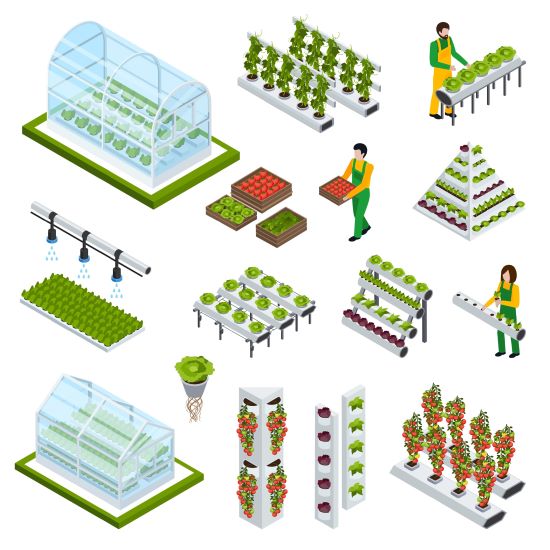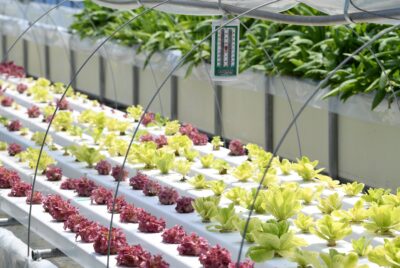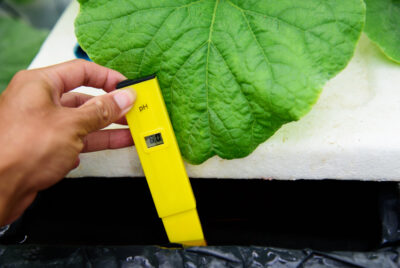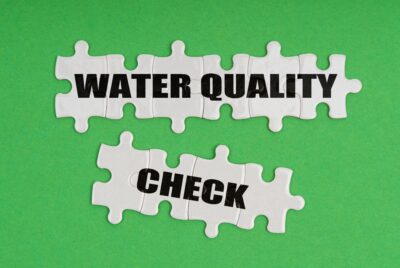Definition of Hydroponics
We may earn a commision from purchases made using our links. Please see our disclosure to learn more.
What is the Definition of Hydroponics?
The fascinating world of indoor gardening has always intrigued me, and among various methods, hydroponics stands out as one that has particularly caught my attention. Essentially, hydroponics is a technique for growing plants without the use of soil. Instead, it relies on a hydroponic fertilizer-rich water solution to provide the crucial elements for plant growth. In this article, I will delve into the hydroponics definition, explore its benefits, outline the key parts of hydroponic systems, discuss different types of hydroponic systems, guide you through setting up an indoor hydroponic garden, provide tips on picking plants, offer upkeep ideas, fix common issues, and share key tips for success.
Benefits Of Hydroponics
Firstly, when it comes to indoor gardening, hydroponics offers numerous advantages over traditional soil-based methods. For instance, one of the most significant benefits is its skillful use of water and hydroponic fertilizer. Interestingly, water is recirculated in hydroponics, resulting in reduced water use compared to soil gardening. Moreover, delivering hydroponic fertilizers directly to the plant’s roots enhances nutrient absorption, leading to faster growth and higher yields.
Another key point of hydroponics is its flexibility in location and space utilization. With indoor hydroponic systems, you can set up gardens in small urban spaces, balconies, or even indoors. More importantly, the controlled environment allows for the optimization of conditions such as seedling growth and hydroponic propagation, temperature, humidity, and lighting, resulting in healthier and more robust plants.
Key Components of Hydroponic Systems
To truly grasp the hydroponics technique, one must explore its key components through this outline:
First, the growing medium, which replaces soil, provides support for the plant roots. Common growing mediums in hydroponics include rockwool, perlite, coconut coir, and vermiculite.
Secondly, hydroponic fertilizer is a vital element in hydroponic systems, comprising a balanced mixture of key nutrients for plant growth. In these systems, the hydroponic system dissolves nutrients such as nitrogen, phosphorus, potassium, and micronutrients in water and delivers them directly to the plant roots.
Next, water quality for hydroponics and circulation is crucial for keeping hydroponic systems running smoothly. A reservoir holds the hydroponic fertilizer solution, while an air pump ensures continuous distribution to the plants.
Additionally, hydroponic grow lights play a significant role in indoor hydroponic systems as plants require adequate light for photosynthesis. Growers commonly use full-spectrum LED grow lights due to their energy efficiency and ability to customize the light spectrum. This customization allows for optimal plant growth at different stages, especially for herbs. Many growers still use HID grow lights.
Lastly, monitoring and adjusting pH levels and hydroponic fertilizer concentrations is vital. Regular pH checks optimize nutrient uptake while monitoring nutrient levels maintain a proper balance and prevent deficiencies or toxicities.
Types of Indoor Hydroponic Systems
Several types of indoor hydroponic systems exist, each with its advantages and suitability for different plants and growing environments.
- Deep Water Culture (DWC): Plants are suspended above the reservoir, with their roots hanging down into it. Air stones or diffusers provide oxygen for root health.
- Nutrient Film Technique (NFT): NFT systems involve a thin film of hydroponic fertilizer solution flowing over the roots, facilitating effective nutrient absorption. The system recirculates the unused solution.
- Drip Irrigation System: Drip systems deliver a controlled amount of hydroponic fertilizer solution directly to the plant roots through drippers or emitters. This conserves water and enables precise nutrient delivery.
- Aeroponics: Aeroponic systems like a vertical hydroponic garden, mist the roots with a hydroponic fertilizer solution, giving both water and oxygen. This method is ideal for delicate plants and root crops.
- Ebb and Flow (Flood and Drain): The hydroponic flood table system periodically floods the growing tray with the hydroponic fertilizer solution and drains it away, ensuring sufficient oxygen supply to the roots.
- Aquaponics: Aquaponics is a natural and mutually beneficial relationship between plants and aquatic animals, forming a self-sustaining ecosystem.
- Hydroponic Planter: A small tabletop 4-12 Pod Indoor Hydroponic Planter with built-in LED lights. A truly self-contained unit.
Passive Hydroponic Systems
- Kratky Method: Unlike conventional hydroponics, which depends on pumps and timers, the Kratky Method allows plants to absorb water and nutrients at their own pace.
- Hydroponic Wick System: What exactly is this wick system, you ask? It doesn’t rely on moving parts like pumps or electricity. The solution is drawn up to the roots via capillary action through wicks.
Setting Up an Indoor Hydroponic Garden
Now that you understand the key elements and types of hydroponic systems, let’s discuss how to set up your indoor hydroponic system.
- Choose a suitable space and containers: Select a well-ventilated area with access to electricity, then determine the size and number of containers based on the plants and available space.
- Select the appropriate hydroponic system: Consider factors such as plant types, available resources, and gardening goals to choose a system that aligns with your needs.
- Install necessary equipment and lighting: Set up the hydroponic system as instructed by the manufacturer, positioning the grow lights at the optimal height and angle for ideal light intensity and coverage.
- Prepare the hydroponic fertilizer solution: Follow the manufacturer’s guidelines to prepare a well-balanced solution, considering your plants’ pH, nutrient needs, and water temperature.
Selecting Plants For Hydroponics
Hydroponics allows for the cultivation of a wide variety of plants, including peppers, cucumbers, spinach, kale, lettuce, and my favorite, microgreens. When selecting hydroponic plants, consider their growth habits, space demands, and specific hydroponic fertilizer needs. Research optimal conditions for each plant and tailor your hydroponic setup accordingly. Maybe try a Co2 generator to enhance your plants and receive out-of-this-world growth.
Maintaining A Hydroponic Garden
Proper upkeep is crucial for the success of your indoor hydroponic system. Key upkeep tasks include monitoring and adjusting pH and nutrient levels. Maintaining the fertilizer solution. Cleaning equipment. Preventing pests and diseases naturally.
Troubleshooting Common Issues
While hydroponics offers numerous advantages, challenges can arise. Common issues include hydroponic fertilizer deficiencies and excesses, pH imbalances, algae growth, and root rot. Fix issues by monitoring and adjusting nutrient levels, keeping pH balanced, implementing prevention measures, and ensuring adequate drainage and aeration.
Tips For Success in Indoor Hydroponic Gardening
Maximize your indoor hydroponic garden by starting small, evolving slowly, recording progress, keeping a routine, and connecting with other green thumbs.
Conclusion
Hydroponics is a fascinating and effective method of indoor gardening. It eliminates the need for soil while giving plants all the necessary hydroponic fertilizers for optimal growth. By understanding this soilless culture, key system components, plant selection, and keeping a consistent monitoring and adjustment routine, a robust indoor hydroponic garden can be set up. Start small, learn from experienced growers, and enjoy growing your nutrient-rich oasis at home. I hope you find this definition of hydroponics useful.
FAQs
Is hydroponic gardening suitable for novices?
Absolutely! Novices and experienced growers alike can enjoy hydroponic gardening. Starting with a simple indoor hydroponic system and gradually expanding your knowledge and setup will help you gain confidence in this exciting gardening method.
Can hydroponic gardening save water compared to traditional gardening?
Yes, cycling and reusing the hydroponic fertilizer solution reduces water use compared to traditional soil-based gardening.
Can I grow hydroponically in a greenhouse?
hydroponic greenhouses present an exciting and sustainable avenue for growing plants indoors. They provide optimal growing conditions, ensure year-round availability of fresh produce, and contribute to higher yields.
Can I use fluorescent grow lights?
Yes, plants genuinely cherish these lights! Fluorescent lights, for starters, provide a broad spectrum of light that closely resembles the sun. Moreover, they’re energy-efficient, reasonably priced, and emit minimal heat.
Which is better, Hydroponics or Aeroponics?
It’s crucial to evaluate factors such as nutrient delivery, water efficiency, complexity, plant support, energy consumption, and your specific needs. Consider your experience level, the types of plants you wish to grow, available space, budget, and your environmental impact goals.
How about Hydroponics or Aquaponics, which is better?
For me, Aquaponics stood out, mainly due to its sustainability factor. Aquaponics recycles fish waste as a nutrient source, marking it as a natural closed-loop system.
Can you use hydroponics outside?
By all means, just make sure to find the right system for you.
Is there a DIY option for Hydroponic Systems?
Yes, the options are endless.





Comments are closed.